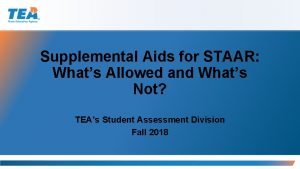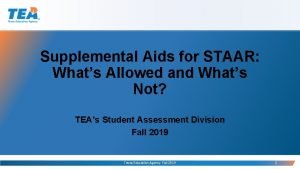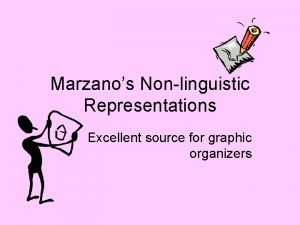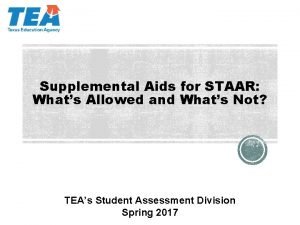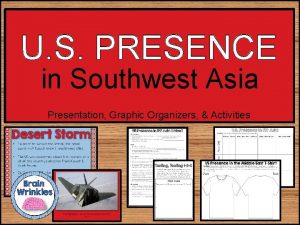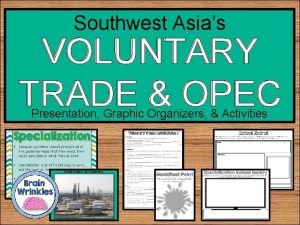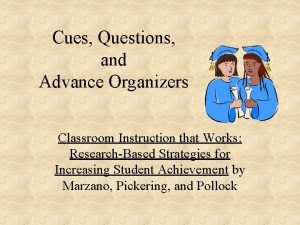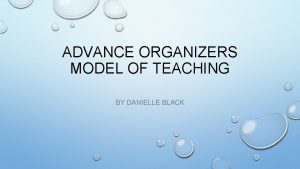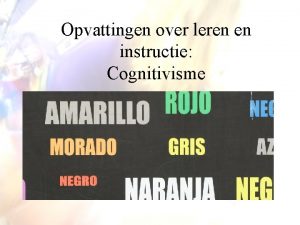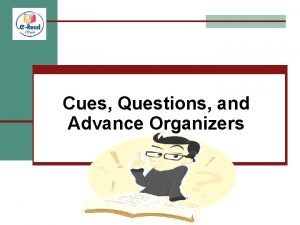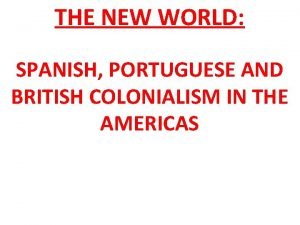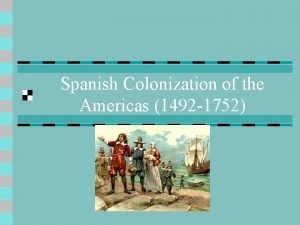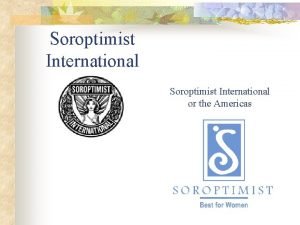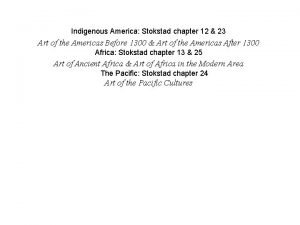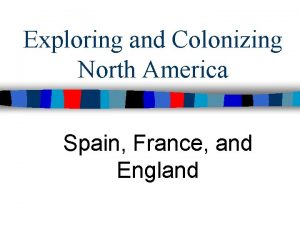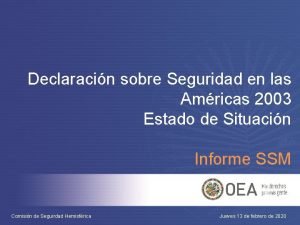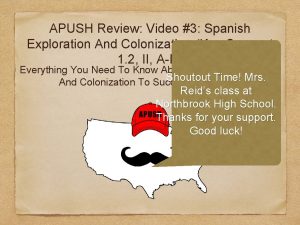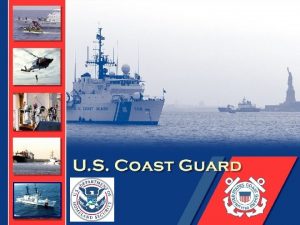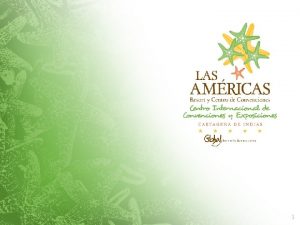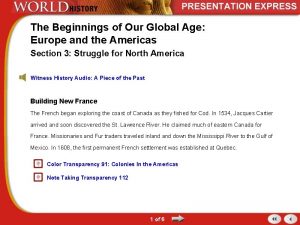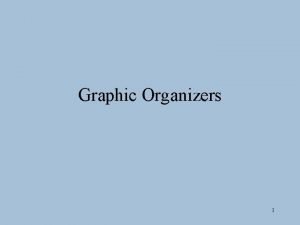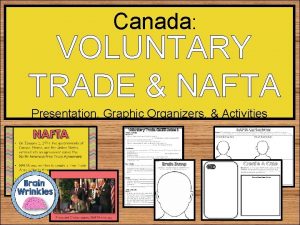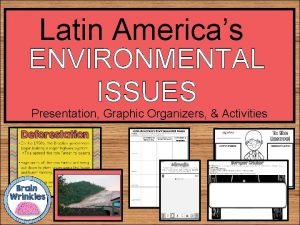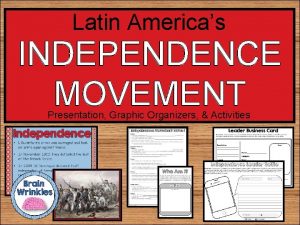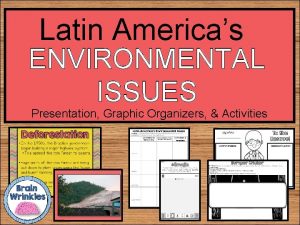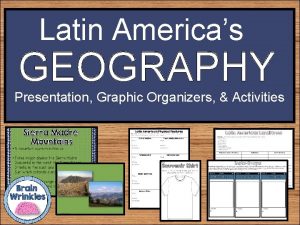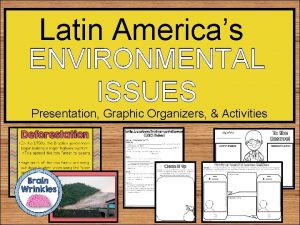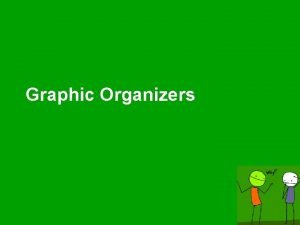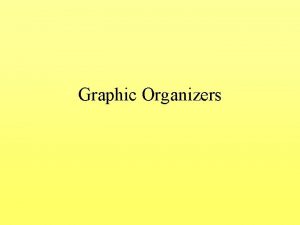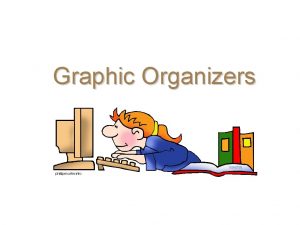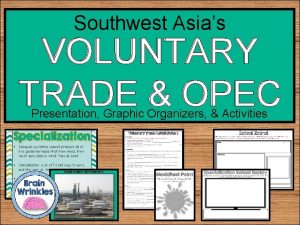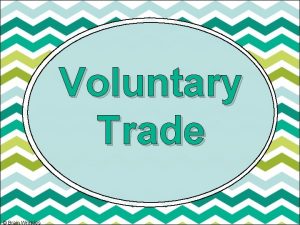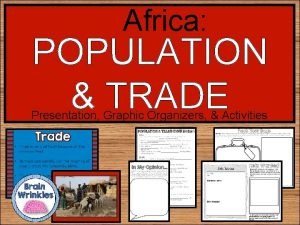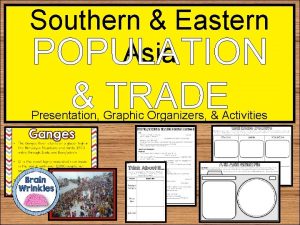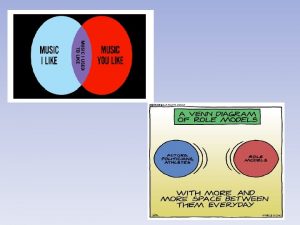Latin Americas VOLUNTARY TRADE Presentation Graphic Organizers Activities
















































- Slides: 48

Latin America’s VOLUNTARY TRADE Presentation, Graphic Organizers, & Activities

STANDARDS: SS 6 E 2 The student will give examples of how voluntary trade benefits buyers and sellers in Latin America and the Caribbean and Canada. a. Explain how specialization encourages trade between countries. b. Compare and contrast different types of trade barriers, such as tariffs, quotas, and embargos. c. Explain the functions of the North American Free Trade Agreement (NAFTA). d. Explain why international trade requires a system for exchanging currencies between nations. © Brain Wrinkles

TEACHER INFO: CLOZE Notes • The next pages are handouts for the students to use for note-taking during the presentation. (Print front to back to save paper and ink. ) • Check the answers as a class after the presentation. © Brain Wrinkles

Voluntary Trade CLOZE Notes 1 Why Trade? • Voluntary trade occurs when different countries choose to engage in the _______________ with one another. • Countries trade goods because no country has _______________ to produce every single thing its people need. • Voluntary trade is good for countries because it lets a country _______________ and buy the resources it needs. Specialization • Because countries cannot produce all of the goods/services that it needs, they must specialize in _______________. • Specialization is an _______________ , and the cost of items produced is lower. • It increases trade because a country can get what it needs at the _________ when produced by someone who specializes in producing that item. Latin America • Mexico specializes in _______________ , which is one of its biggest industries. • Ford, Nissan, Honda, BMW, Mercedes-Benz, and more all have _______________. • Venezuela specializes in _________. • _______________ of the country’s trade revenue. • Brazil specializes in cattle, timber, sugar, soybeans, poultry, and ________. • It also has _______________ , steel, manufacturing, and technology industries. Barriers • Trade barriers are natural or man-made _______________. • Natural trade barriers include _______________ , deserts, rainforests, or lack of access to bodies of water. • Bolivia is a _______________ , so trade is difficult because it does not have ports to ship goods overseas. • Political trade barriers are policies _______________ to regulate trade. • Countries sometimes set up trade _______________ because they want to sell and produce their own goods. • They are usually meant to help domestic producers _______________ with foreign producers in the world marketplace. © Brain Wrinkles

Voluntary Trade CLOZE Notes 2 Tariffs • Tariffs are _______________________ . • They cause the consumer to _______________ for an imported item, thus increasing the demand for a lower priced-item produced domestically. • For example, Colombia could place a tariff on all imported coffee, thus making Colombian coffee _______________. Quotas • Quotas are ______________________ that can be imported into a country. • Quotas can _______________ , which cause prices to rise. Embargo • Embargoes are another _______________ to trade. • In an embargo, nations _______________ with a country at all. • Since the 1960 s, the U. S. has imposed an _______________. • The purpose of the embargo is to _______________ government to respect human rights and allow more political and economic freedom. • ______________________ between the US and Cuba since 2015, so we’ll see what happens in the next few years… Currency Exchange • Currency is something that is _______________ and can be used to purchase goods and services in a market. • Because countries have _______________ , international trade require a system for exchanging currencies between nations. • Money from one country must be _______________ of another country to pay for goods in that country. Exchange Rate • What the _____________________ in terms of another country’s currency is called the exchange rate. • For example, an exchange rate of 3 reals to the US dollar means that 3 reals are worth the _______________. • Foreign exchange makes it easier to trade all _______________. © Brain Wrinkles

Voluntary Trade CLOZE Notes 3 NAFTA • On January 1, 1994, the governments of Canada, Mexico, and the United States entered into an agreement called the __________________________. • NAFTA _______________ between the three countries and became the world’s largest free-trade zone. • It greatly increased ____________________ in North America. Functions • NAFTA’s key functions include: 1. Eliminating _______________ 2. Removing _______________ on investments 3. Removing customs barriers at _______________ 4. Establishing tough _________________ , health, and safety regulations 5. Improving _______________ © Brain Wrinkles

Voluntary Trade CLOZE Notes 1 KEY Why Trade? • Voluntary trade occurs when different countries choose to engage in the exchange of goods with one another. • Countries trade goods because no country has all the resources necessary to produce every single thing its people need. • Voluntary trade is good for countries because it lets a country sell its own resources and buy the resources it needs. Specialization • Because countries cannot produce all of the goods/services that it needs, they must specialize in what they do best. • Specialization is an efficient way to work, and the cost of items produced is lower. • It increases trade because a country can get what it needs at the lowest cost when produced by someone who specializes in producing that item. Latin America • Mexico specializes in automobile production, which is one of its biggest industries. • Ford, Nissan, Honda, BMW, Mercedes-Benz, and more all have plants in Mexico. Venezuela specializes in oil production. Oil exports provide 90% of the country’s trade revenue. Brazil specializes in cattle, timber, sugar, soybeans, poultry, and citrus products. It also has growing automobile, steel, manufacturing, and technology industries. • • Barriers • Trade barriers are natural or man-made obstacles to voluntary trade. • Natural trade barriers include mountain ranges, deserts, rainforests, or lack of access to bodies of water. • Bolivia is a landlocked country, so trade is difficult because it does not have ports to ship goods overseas. • Political trade barriers are policies passed by a government to regulate trade. • Countries sometimes set up trade barriers to restrict trade because they want to sell and produce their own goods. • They are usually meant to help domestic producers remain competitive with foreign producers in the world marketplace. © Brain Wrinkles

Voluntary Trade CLOZE Notes 2 KEY Tariffs • Tariffs are taxes placed on imported goods. • They cause the consumer to pay a higher price for an imported item, thus increasing the demand for a lower priced-item produced domestically. • For example, Colombia could place a tariff on all imported coffee, thus making Colombian coffee cheaper for its consumers. Quotas • Quotas are limits on the amount of a good that can be imported into a country. • Quotas can cause shortages, which cause prices to rise. Embargo • Embargoes are another political barrier to trade. • In an embargo, nations refuse to trade with a country at all. • Since the 1960 s, the U. S. has imposed an embargo against Cuba. • The purpose of the embargo is to pressure Cuba’s communist government to respect human rights and allow more political and economic freedom. • Relations have been improving between the US and Cuba since 2015, so we’ll see what happens in the next few years… Currency Exchange • Currency is something that is assigned value and can be used to purchase goods and services in a market. • Because countries have different forms of currency, international trade require a system for exchanging currencies between nations. • Money from one country must be converted into the currency of another country to pay for goods in that country. Exchange Rate • What the currency of a nation is worth in terms of another country’s currency is called the exchange rate. • For example, an exchange rate of 3 reals to the US dollar means that 3 reals are worth the same as 1 dollar. • Foreign exchange makes it easier to trade all around the world. © Brain Wrinkles

Voluntary Trade CLOZE Notes 3 KEY NAFTA • On January 1, 1994, the governments of Canada, Mexico, and the United States entered into an agreement called the North American Free Trade Agreement. • NAFTA lowered trade barriers between the three countries and became the world’s largest free-trade zone. • It greatly increased trade and economic integration in North America. Functions • NAFTA’s key functions include: 1. Eliminating tariffs 2. Removing restrictions on investments 3. Removing customs barriers at border crossings 4. Establishing tough standards for environmental, health, and safety regulations 5. Improving working conditions © Brain Wrinkles

Latin America’s VOLUNTARY TRADE Ame Specialization, Trade Barriers, Currency Exchange, & NAFTA © Brain Wrinkles

Why Trade? • Voluntary trade occurs when different countries choose to engage in the exchange of goods with one another. • Countries trade goods because no country has all the resources necessary to produce every single thing its people need. • Voluntary trade is good for countries because it lets a country sell its own resources and buy the resources it needs. © Brain Wrinkles

Specialization © Brain Wrinkles

Specialization • Because countries cannot produce all of the goods/services that they need, they must specialize in what they do best. • Specialization is an efficient way to work, and the cost of items produced is lower. • It increases trade because a country can get what it needs at the lowest cost when produced by someone who specializes in producing that item. © Brain Wrinkles

Latin America • Mexico specializes in automobile production, which is one of its biggest industries. • Ford, Nissan, Honda, BMW, Mercedes. Benz, and more all have plants in Mexico. • Venezuela specializes in oil production. • Oil exports provide 90% of the country’s trade revenue. • Brazil specializes in cattle, timber, sugar, soybeans, poultry, and citrus products. • It also has growing automobile, steel, manufacturing, and technology industries. © Brain Wrinkles

Nissan Factory in Mexico © Brain Wrinkles

80% of the World’s Orange Juice is Produced in Brazil © Brain Wrinkles

Trade Barriers © Brain Wrinkles

Barriers • Trade barriers are natural or man-made obstacles to voluntary trade. • Natural trade barriers include mountain ranges, deserts, rainforests, or lack of access to bodies of water. • Bolivia is a landlocked country, so trade is difficult because it does not have ports to ship goods overseas. • Political trade barriers are policies passed by a government to regulate trade. © Brain Wrinkles

© Brain Wrinkles

Barriers • Countries sometimes set up trade barriers to restrict trade because they want to sell and produce their own goods. • They are usually meant to help domestic producers remain competitive with foreign producers in the world marketplace. © Brain Wrinkles

Tariffs • Tariffs are taxes placed on imported goods. • They cause the consumer to pay a higher price for an imported item, thus increasing the demand for a lower priced-item produced domestically. • For example, Colombia could place a tariff on all imported coffee, thus making Colombian coffee cheaper for its consumers. © Brain Wrinkles

Quotas • Quotas are limits on the amount of a good that can be imported into a country. • Quotas can cause shortages, which cause prices to rise. © Brain Wrinkles

Embargo • Embargoes are another political barrier to trade. • In an embargo, nations refuse to trade with a country at all. • Since the 1960 s, the U. S. has imposed an embargo against Cuba. • The purpose of the embargo is to pressure Cuba’s communist government to respect human rights and allow more political and economic freedom. • Relations have been improving between the US and Cuba since 2015, so we’ll see what happens in the next few years… © Brain Wrinkles

© Brain Wrinkles

Currency Exchange © Brain Wrinkles

Currency Exchange • Currency is something that is assigned value and can be used to purchase goods and services in a market. • Because countries have different forms of currency, international trade require a system for exchanging currencies between nations. • Money from one country must be converted into the currency of another country to pay for goods in that country. © Brain Wrinkles

Brazilian Real Cuban Peso Mexican Peso © Brain Wrinkles

Exchange Rate • What the currency of a nation is worth in terms of another country’s currency is called the exchange rate. • For example, an exchange rate of 3 reals to the US dollar means that 3 reals are worth the same as 1 dollar. • Foreign exchange makes it easier to trade all around the world. © Brain Wrinkles

Nation Currency Exchange Rate Against US Dollar 2016 Mexico Mexican Peso 18. 7 Brazilian Real 3. 9 Cuban Peso 26. 5 Chilean Peso 712. 4 Venezuelan Bolivar 6. 3 © Brain Wrinkles

NAFTA © Brain Wrinkles

NAFTA • On January 1, 1994, the governments of Canada, Mexico, and the United States entered into an agreement called the North American Free Trade Agreement. • NAFTA lowered trade barriers between the three countries and became the world’s largest free-trade zone. • It greatly increased trade and economic integration in North America. © Brain Wrinkles

President Clinton signing NAFTA into law. © Brain Wrinkles

Functions • NAFTA’s key functions include: 1. Eliminating tariffs 2. Removing restrictions on investments 3. Removing customs barriers at border crossings 4. Establishing tough standards for environmental, health, and safety regulations 5. Improving working conditions © Brain Wrinkles

TEACHER INFO: Instant Replay • Print off the Specialization Instant Replay handout for each student. • The students will draw a scene depicting specialization in action. • In the textbox, they will write a play-by-play (short summary) of what is happening in the scene. © Brain Wrinkles

Specialization Instant Replay Directions: Review the economic concept of “specialization” by drawing a scene depicting specialization in action on the TV below. Next, write a play-by-play breakdown of the scene in the textbox. © Brain Wrinkles

TEACHER INFO: Trade Barriers Comic Strip • Print off the Comic Strip handout for each student. • The students will create a comic strip that shows each trade barrier in action. • They can choose to use actual countries, or they can create their own characters. *Info about the trade barriers should still be factual, though. © Brain Wrinkles

Trade Barriers Comic Strip Directions: Create a comic strip that shows trade barriers in action. You can use actual countries, or you can create your own characters. Be sure to include factual information about how each trade barrier works in your comic strip! © Brain Wrinkles

TEACHER INFO: Extra! • Print off the Extra! handout for each student. • The students will write a news article about NAFTA taking effect. The article should include the purpose of NAFTA and its major functions. • In the “polaroid”, they will draw an action shot of something related to NAFTA. © Brain Wrinkles

Extra! Directions: Write a news article that describes this important event: NAFTA taking effect on January 1, 1994. Add a catchy headline (top box) and an action shot (snapshot box). Be sure to include information about NAFTA’s purpose. Date: Article By: © Brain Wrinkles $

TEACHER INFO: FLIPPED • Print off the FLIPPED handout for each student. • The students will write questions for the answers inside of the 6 circles. • When they are finished, have the students trade papers with an elbow buddy and check each other’s questions to make sure that they are correct. © Brain Wrinkles

FLIPPED Directions: Create accurate review questions for the six answers below. The answer is: SPECIALIZATION The answer is: QUOTA The answer is: NAFTA What is the question? The answer is: EMBARGO The answer is: TARIFF The answer is: CURRENCY EXCHANGE What is the question? © Brain Wrinkles

TEACHER INFO: Comprehension Check • Print off the Comprehension Check handout for each student. • Students will complete the assignment after discussing the presentation. This can also be used as a quiz! © Brain Wrinkles

Voluntary Trade Comprehension Check 1. Give an example of specialization: 2. What are two advantages to specialization? 3. What type of trade barrier involves adding a special tax on imported goods? 4. What trade barrier restricts the quantity of an item that is brought into a country? 5. What is an embargo? 6. Give an example of an embargo: 7. Which countries are involved in NAFTA? 8. What is the main purpose of NAFTA? 9. What is the currency of Mexico? 10. Why must people exchange currency? © Brain Wrinkles

Voluntary Trade Comprehension Check - KEY 1. Give an example of specialization: Answers vary. Examples: Brazil – oranges, Mexico – cars, Venezuela – oil 2. What are two advantages to specialization? Lower costs & faster production 3. What type of trade barrier involves adding a special tax on imported goods? Tariff 4. What trade barrier restricts the quantity of an item that is brought into a country? Quota 5. What is an embargo? Complete ban on trading between two countries 6. Give an example of an embargo: US-Cuba since 1960 s 7. Which countries are involved in NAFTA? US, Canada, & Mexico 8. What is the main purpose of NAFTA? To increase trade by creating a free-trade zone 9. What is the currency of Mexico? Peso 10. Why must people exchange currency? Because different countries have different currencies © Brain Wrinkles

TEACHER INFO: TICKET OUT THE DOOR • Print out the exit slip page for each student (twoper-page). • Have the students write down what the most confusing part of today’s lesson was for them. • After class, read over the slips and address the “muddiest points” the next day. This is a helpful slip to use to see what needs to be taught again. © Brain Wrinkles

Name: Muddiest Point What is the most confusing part of the topic that we’re studying. Write something that you don’t understand below. © Brain Wrinkles

Thank You! Thank you so much for downloading this file. I sincerely hope you find it helpful and that your students learn a lot from it! I look forward to reading your feedback in my store. If you like this file, you might want to check out some of my other products that teach social studies topics in creative, engaging, and hands-on ways. Best wishes, Ansley at Brain Wrinkles

Terms of Use © 2016 Brain Wrinkles. Your download includes a limited use license from Brain Wrinkles. The purchaser may use the resource for personal classroom use only. The license is not transferable to another person. Other teachers should purchase their own license through my store. This resource is not to be used: • By an entire grade level, school, or district without purchasing the proper number of licenses. For school/district licenses at a discount, please contact me. • As part of a product listed for sale or free by another individual. • On shared databases. • Online in any way other than on password-protected website for student use only. © Copyright 2016. Brain Wrinkles. All rights reserved. Permission is granted to copy pages specifically designed for student or teacher use by the original purchaser or licensee. The reproduction of any other part of this product is strictly prohibited. Copying any part of this product and placing it on the Internet in any form (even a personal/classroom website) is strictly forbidden. Doing so makes it possible for an Internet search to make the document available on the Internet, free of charge, and is a violation of the Digital Millennium Copyright Act (DMCA). Thank you, Ansley at Brain Wrinkles Clipart, fonts, & digital papers for this product were purchased from:
 Tea supplemental aids
Tea supplemental aids Blank graphic organizers for math staar
Blank graphic organizers for math staar Supplemental aids
Supplemental aids Hierarchy
Hierarchy Universal accommodations for mcas
Universal accommodations for mcas Nonlinguistic representations examples in the classroom
Nonlinguistic representations examples in the classroom Blank graphic organizers for math staar
Blank graphic organizers for math staar Marzanos strategies
Marzanos strategies Mcas graphic organizer
Mcas graphic organizer Positive voluntariness example
Positive voluntariness example Who benefits from voluntary trade
Who benefits from voluntary trade Geography of latin america color by number
Geography of latin america color by number Somebody wanted but so us presence in sw asia
Somebody wanted but so us presence in sw asia Voluntary trade comprehension check answers
Voluntary trade comprehension check answers Graphic weight graphic novel definition
Graphic weight graphic novel definition Ghost graphic story graphic and wayfinding
Ghost graphic story graphic and wayfinding Cues and questions
Cues and questions Example of narrative advance organizer
Example of narrative advance organizer Expository advance organizers examples
Expository advance organizers examples Dear organizers
Dear organizers Discourse analysis and vocabulary
Discourse analysis and vocabulary Marzano's 9 high yield strategies
Marzano's 9 high yield strategies Cues questions and advance organizers
Cues questions and advance organizers Skimming advance organizer
Skimming advance organizer Trade diversion and trade creation
Trade diversion and trade creation Umich
Umich Trade diversion and trade creation
Trade diversion and trade creation The trade in the trade-to-gdp ratio
The trade in the trade-to-gdp ratio Fair trade not free trade
Fair trade not free trade Trade diversion and trade creation
Trade diversion and trade creation Trampliner
Trampliner What is triangle trade
What is triangle trade Operating activities vs investing activities
Operating activities vs investing activities Both indoor and outdoor sports
Both indoor and outdoor sports Primary and support activities
Primary and support activities Primary activities definition
Primary activities definition Spanish caste system in the americas
Spanish caste system in the americas Spanish colonization of the americas
Spanish colonization of the americas Soroptimist international of the americas
Soroptimist international of the americas Art of the americas before 1300
Art of the americas before 1300 Ib history exam
Ib history exam Who colonized north america
Who colonized north america Declaración sobre seguridad en las américas 2003
Declaración sobre seguridad en las américas 2003 Spanish caste system
Spanish caste system Americas guardians mc
Americas guardians mc Centro de convenciones las americas
Centro de convenciones las americas The beginnings of our global age europe and the americas
The beginnings of our global age europe and the americas Transversal de las americas
Transversal de las americas Abl americas
Abl americas
